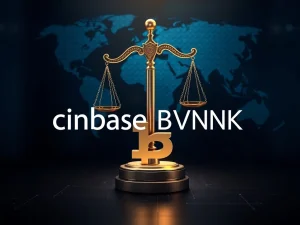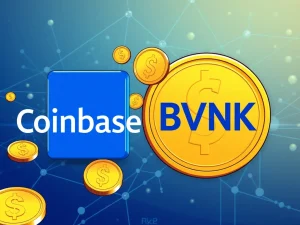Crypto Value Unlocked: Bridging Finance for a Resilient Future

For years, the conversation around cryptocurrency often centered on its potential to completely dismantle traditional finance. Many believed crypto’s ultimate purpose was to replace established institutions, ushering in a purely decentralized world. However, a more nuanced and powerful narrative is emerging, one championed by experts like Dr. Zurab Ashvil: the true **crypto value** lies not in destruction, but in strategic collaboration. Instead of a collision, we are witnessing a profound convergence that promises a more open, efficient, and resilient global financial system for everyone.
Unlocking Crypto Value: Beyond Speculation
The early days of crypto were often dominated by headlines about memecoins and sudden speculative surges. While these captured public attention, they often overshadowed the deeper, more foundational work happening within the industry. Today, the real **crypto value** is being built through pragmatic efforts, focusing on creating bridges rather than burning them. We’re seeing a significant shift:
- Crypto firms are launching traditional investment products.
- There’s a growing trend of real-world asset tokenization.
- The focus is moving from hype-driven launches to robust infrastructure, including programmable finance and real-world utility.
This evolution signifies a maturing industry. It’s about enhancing, not merely replacing, established financial institutions, leveraging decentralized innovation to create a superior system that benefits all participants. The goal is to build a financial future that is both innovative and stable, drawing strength from both traditional and digital realms.
Seamless TradFi DeFi Integration: The Regulatory Roadmap
One of the most critical catalysts for this convergence is the increasing demand from institutional capital. Traditional financial players are not inherently anti-innovation, but they require certainty, reduced counterparty risk, and dependable governance structures before committing significant resources. This is where **TradFi DeFi integration** finds its footing, driven by clearer regulatory frameworks.
Consider the progress made on the regulatory front:
- United States: The approval of spot Bitcoin Exchange-Traded Products (ETPs) has been a landmark event, providing a regulated avenue for institutional engagement. Furthermore, proposed legislation like the GENIUS and STABLE Acts are working to establish clearer guidelines, empowering banks and other financial entities to confidently interact with digital assets. States such as Texas and Wyoming are also proactively advancing their digital asset initiatives, setting precedents for broader adoption.
- Europe: The Markets in Crypto-Assets (MiCA) regulation stands as a comprehensive framework, introducing market rules for various crypto assets across the European Union. This regulatory clarity is vital for fostering innovation while ensuring consumer protection and market integrity.
This regulatory momentum is essential. It unlocks capital, reduces perceived risks, and fosters innovation that can withstand scrutiny. While some argue that this shift towards institutionalization betrays crypto’s original ethos of decentralization, it overlooks a fundamental reality: for any innovation to achieve mainstream adoption, it must strike a balance between disruption and established trust. Delivering the same levels of trust, security, and scale offered by traditional institutions is paramount for broad appeal. This isn’t about abandoning crypto’s disruptive spirit; it’s about channeling its strengths to achieve greater impact.
Real-World Asset Tokenization: A Trillion-Dollar Opportunity
Perhaps nowhere is the shift from speculative hype to tangible infrastructure more evident than in the realm of **real-world asset tokenization**. Take commercial real estate, for instance. It’s one of the world’s most valuable asset classes, yet it’s notoriously illiquid. With high transaction costs and systems predating modern computing, a significant portion of its reported $38 trillion value remains trapped and inaccessible.
This is where blockchain-based tokenization offers a compelling solution. Reports suggest that trillions in real estate could be tokenized by 2035, fundamentally transforming wealth creation and unlocking liquidity. How does this work?
- Fractional Ownership: Tokenization allows large assets to be divided into smaller, digital units (tokens). This means an asset like a skyscraper can be owned by hundreds or thousands of investors, rather than just a few large entities. This democratizes access, opening up previously exclusive asset classes to a much broader range of investors globally.
- Global Accessibility: Imagine a student in one part of the world owning a fraction of a shopping center on another continent, or a community group in Asia generating revenue from yields on a development in Europe. This global reach was once impractical but is now a reality through tokenization.
- Enhanced Liquidity: By creating tradable digital tokens, real estate and other illiquid assets can be bought and sold much more easily and quickly on secondary markets, similar to stocks. This vastly improves liquidity, reducing the time and cost associated with traditional property transactions.
- New Financial Products: The ability to tokenize real assets opens doors for innovative financial products. A crypto exchange, for example, could secure assets against tokenized property or offer real estate-backed rewards, creating new pathways for capital and value. This blurs the lines between traditional and decentralized finance, accelerating their convergence.
As the infrastructure for tokenization matures, we can expect a surge in tokenized assets beyond real estate, including art, commodities, and intellectual property. This will inevitably lead to greater institutional participation and a definitive shift from an era of speculative excess to one of tangible utility and sustainable growth.
Driving Blockchain Innovation for Trust and Scale
The core strengths of blockchain technology are perfectly aligned with the needs of modern finance, enabling profound **blockchain innovation**. These strengths include transparency, programmability, and speed. When harnessed effectively, they can broaden access, unlock new sources of capital, and improve financial experiences while delivering the levels of trust and scale previously exclusive to established institutions.
Consider the transformative potential:
- Transparency: Blockchain’s immutable and verifiable on-chain records offer unparalleled transparency. This contrasts sharply with the opacity and fragmentation that have long plagued legacy financial systems. For businesses and individuals, this means greater clarity and auditability in transactions.
- Programmability: Smart contracts, self-executing agreements coded onto the blockchain, enable automated compliance and programmable cash flows. This reduces manual errors, speeds up processes, and introduces new levels of efficiency. For instance, payments can be automatically released once certain conditions are met, revolutionizing escrow and lending.
- Speed and Efficiency: Blockchain transactions can settle much faster than traditional methods, often within minutes or seconds, regardless of geographical boundaries. This reduces the need for multiple intermediaries, cutting costs and accelerating global commerce.
These capabilities mean that successful crypto projects must now meet new, higher standards. Transparent on-chain records, automated compliance mechanisms, and verifiable economic models are increasingly becoming the benchmarks for any blockchain-backed service or offering that aims for significant impact and widespread adoption. This marks a clear departure from the less regulated and often opaque practices of earlier crypto cycles.
Achieving Crypto Regulatory Clarity: The Path Forward
The journey towards widespread adoption and the full realization of crypto’s promise hinges significantly on achieving **crypto regulatory clarity**. Only by building robust, transparent infrastructure, guided by clear rules, can the industry truly fulfill its potential to democratize finance. The future is not about overthrowing the old order, but about enhancing it to make finance more open, efficient, and accessible for all.
The projects that will define the next decade are those that prioritize:
- Regulatory Clarity: Operating within established legal frameworks builds trust with institutions and the broader public, paving the way for mainstream integration.
- Institutional-Grade Security: Implementing robust security measures is non-negotiable for handling significant capital and sensitive data.
- Verifiable Economic Models: Projects must demonstrate sustainable and transparent economic models that provide real value, moving beyond speculative narratives.
This path of enhancement, not replacement, is the most viable way forward. It acknowledges the strengths of traditional systems while injecting them with the transformative power of decentralized technology. The result is a financial ecosystem that is more resilient, inclusive, and innovative, benefiting individuals and businesses across the globe.
A Unified Financial Future
The vision of crypto’s true value is now clearer than ever: it lies in its ability to bridge the divide between the established and the innovative. By fostering **TradFi DeFi integration**, enabling **real-world asset tokenization**, driving impactful **blockchain innovation**, and working diligently towards **crypto regulatory clarity**, the industry is poised to create a financial system that is not only more robust but also more equitable. This convergence is not just an evolution; it’s a profound transformation towards a unified and universally accessible financial future. The journey from disruption to collaboration is well underway, promising exciting possibilities for everyone.







